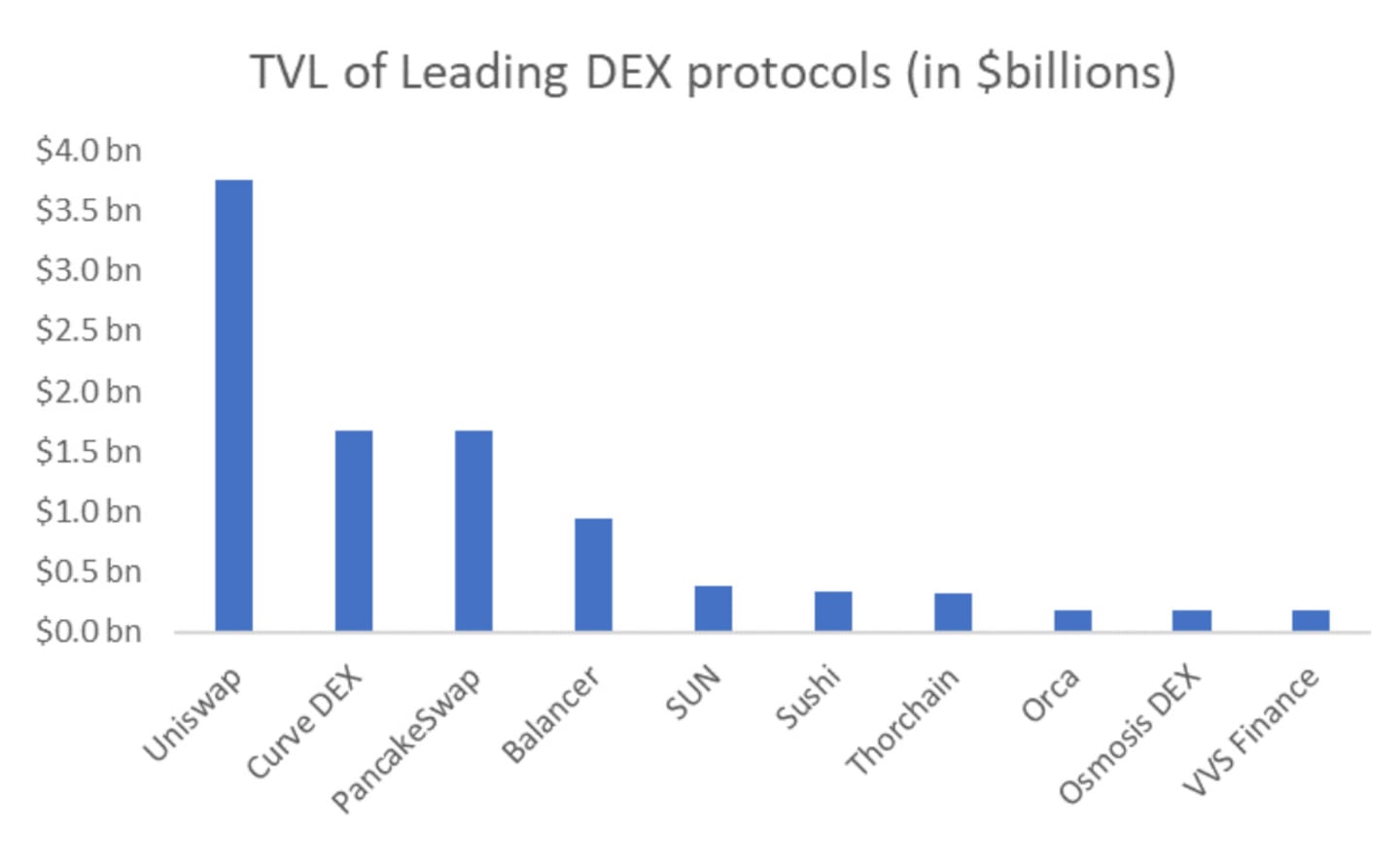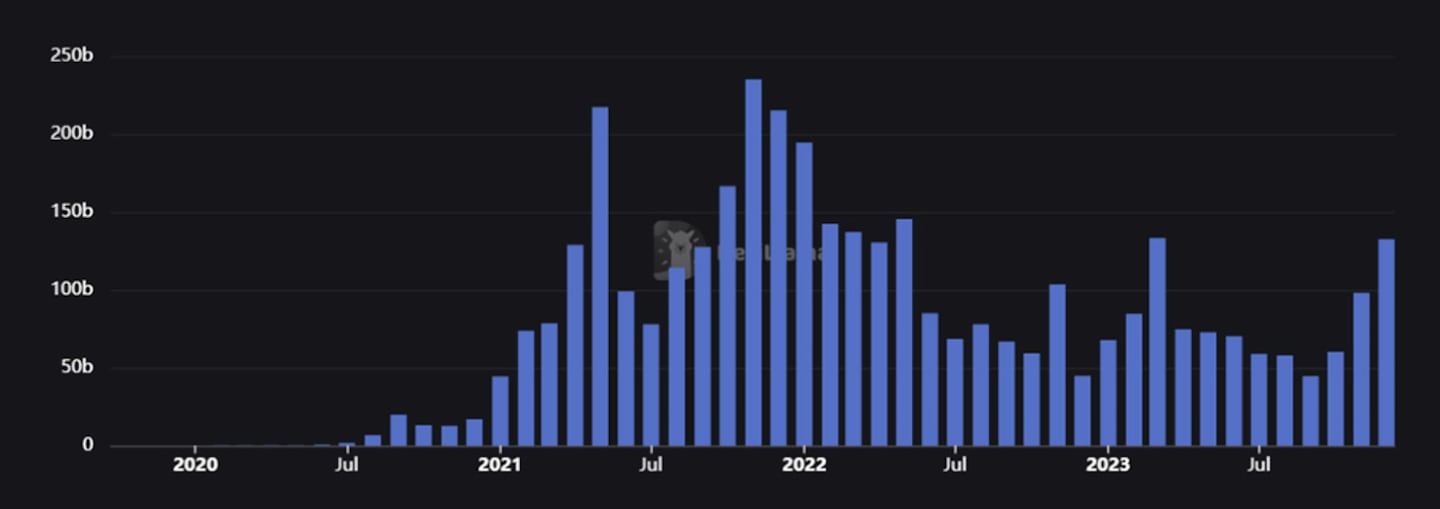- The fear of impermanent loss that haunts liquidity providers has grown more pressing in anticipation of a new bull market.
- While their deposits into automated market makers can sometimes feel like “a soul-crushing downward spiral,” Consello Digital Assets’ Marc-Thomas Arjoon believes there are many reasons why liquidity providers still keep at it.
Marc-Thomas Arjoon is an associate at Consello Digital Assets and was previously an associate at CoinShares. Views expressed are his own.
It’s a question that haunts DeFi’s deepest trenches: why do liquidity providers pour their hard-earned capital into automated market maker protocols when the risk of getting back less than they started with is so high?
This phenomenon is known as impermanent loss — or IL. It occurs when the values of the assets a liquidity provider — or LP for short — deposits into an automated market maker — or AMM — shift.
This creates a situation where when a LP withdraws their assets, they get less back than they would have if they hadn’t provided liquidity, sans the trading fees they earned from doing so.
The allure of passive income from trading fees pales in comparison to the potential wealth erosion lurking beneath the surface.
We all know and respect the revolutionary power of AMMs. Such protocols allow permissionless trading between crypto assets, democratising trading and empowering investors.
But for those who provide the liquidity needed to make AMMs work, the constant dance between fees and IL can feel like a zero-sum game at best, a soul-crushing downward spiral at worst.
Despite this, the vast majority of decentralised exchanges — or DEXs — are AMM-based as shown below.

So, what drives LPs? Are they oblivious to IL, mistaking fees for riches? Degens who crave passive liquidity? Or is there a more subtle logic at play?
It’s unlikely there’s one simple answer, for as we will explore, within the tapestry of DeFi, even the enigmatic LP dances to a complex and often fascinating tune.
Here are my best guesses as to what’s going on.
Savvy LPs
To hedge against the risk of IL, some LPs go long or short on their deposited assets on other trading platforms to achieve a delta-neutral position.
This strategy can only work when the trading fees earned through providing liquidity outweigh the hedging costs.
The effectiveness of this strategy also hinges on the timing of trade executions and liquidity considerations — any miscalculations can lead to losses in both positions.
Diversification
AMMs are unique in that providing liquidity through them offers diversified exposure to emerging, often high-potential assets.
By supplying a diverse mix of tokens to a pool, LPs spread their risk, letting them weather market storms with greater resilience.
This measured approach allows them to participate in DeFi without risking their entire kingdom on a single, volatile wager. For some, this outweighs the IL risk, particularly when combined with a broader portfolio strategy.
Community and governance
LPs can be active participants in DeFi communities, and their votes help determine the trajectory of entire protocols, directing resources towards desired innovations and shaping the broader DeFi landscape.
For some, this value outweighs the purely financial considerations, or it can open avenues for other wealth-generating opportunities.
For instance, it’s common to see protocols offer financial incentives for taking out an LP position using their token and then staking it.
The protocol receives liquidity for their token and the LP gets an additional stream of passive income.
The Fee Oasis
In certain high-volume or niche pools, fees alone can overcome IL, creating a sustainable stream of passive income.
While rare, these unicorns do exist, attracting investors seeking yield in a medium-interest-rate world.
Trading frenzies, where buy and sell orders cascade through liquidity pools like an endless waterfall, are also common.
When they occur, the sheer frequency of transactions generates a torrent of fees, eclipsing the potential sting of IL.
This is especially true for pools where the tokens are relatively stable or correlated to one another.
The future of DEXs and impermanent loss
In recent months, DEX activity is approaching levels not seen since the previous bull market, signalling a renewed appetite for risk.
The once-parched DeFi landscape is now beginning to bloom again with activity, a testament to the resilient spirit of the DeFi community.

However, with great volume comes great IL.
And while I dare not underestimate the resilience and adaptability of AMMs, another technique for facilitating trading may hold promise for the future.
Central limit order books — or CLOBs — are frequently used in traditional finance. Like AMMs, they act as digital marketplaces, but instead of an automated algorithm, buyers and sellers openly post their desired prices for an asset.
Think of a CLOB as a giant whiteboard where everyone scribbles down the prices they’re willing to buy or sell something, and the best matches get made automatically.
CLOBs can be more transparent, efficient, flexible and, most importantly, eliminate the concept of IL. But there’s a catch: they require tons of liquidity and computing power.
The vast computing power and liquidity requirements are why CLOBs were initially difficult to implement.
However technological advancements and a maturing blockchain landscape means CLOBs may finally begin to flourish in the coming years.
Both CLOBs and AMMs have their own strengths and weaknesses. Choosing the right platform depends on individual needs and priorities.
CLOBs offer better price discovery, control, and transparency, while AMMs are more accessible, provide guaranteed liquidity, and are more technologically efficient.
Ultimately, the future of crypto trading probably involves a hybrid approach, leveraging the best features of both models.
There may come a day where IL is something left for the history books. But for now stay safe, stay informed.









